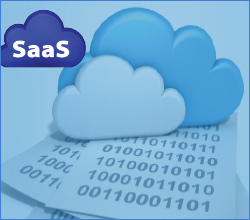
Troubleshooting Dissolution Methods for Solid Oral Dosage Forms
 Mark Powell
Mark Powell
 60 Min
60 Min
Product Id: 706599
The root cause of variable or inconsistent data from compendial dissolution tests can be difficult to identify. Formulation, equipment, operator error and incorrect calculation may be factors. This webinar presents a systematic, logical approach to investigating anomalous dissolution results.

Best Practices in Preparation for an FDA Computer System Audit
 Carolyn Troiano
Carolyn Troiano
 90 Min
90 Min
Product Id: 706354
FDA requires that all computer systems used to produce, manage and report on “GxP” (GMP, GLC, GCP) related products be validated and maintained in accordance with specific rules. This webinar will help you understand the FDA’s current thinking on computer systems that are validated and subject to inspection and audit. It will also consider areas where FDA will likely focus their effort, including on the higher-risk systems. It will cover areas that will help you to plan for an on-site inspection.

How to Prepare a Standard Operating Procedure (SOP)?
 Dr. Afsaneh Motamed Khorasani
Dr. Afsaneh Motamed Khorasani
 60 Min
60 Min
Product Id: 705131
This webinar will detail a step-by-step procedure on how to write a practical, effective and compliant Standard Operating Procedures (SOPs), review and revise SOPs and maintain compliance over the course of the SOP life-time.

Promoting and Advertising Dietary Supplements in Compliance with FDA and FTC Regulations
 Travis Austin MacKay
Travis Austin MacKay
 120 Min
120 Min
Product Id: 702317
This 2-hr webinar will review the FDA and FTC regulations for promoting and advertising dietary supplements, walk you through real-life case studies, help you address compliance, and tell you how to respond to an FDA enforcement action.

Tax Evasion and Tax Fraud - What it means to you when monitoring BSA and filing SARs
 Doug Keipper
Doug Keipper
 60 Min
60 Min
Product Id: 703110
This training on BSA compliance will help you understand the concept of tax evasion and tax fraud and the difference between the two. Learn the best practices to identify tax fraud and how to report suspicious activity.

Advanced Cash Flow Analysis-EBITDA, UCA Cash Flow, Cash Basis Cash Flow, Fixed-Charge Coverage and Free Cash Flow
 David L Osburn
David L Osburn
 90 Min
90 Min
Product Id: 705340
This webinar training will explore multiple models of both business and personal (business owner) cash flow analyses. Various cash flow projections and sensitivity analyses will also be explored. The webinar will conclude with commercial real estate (CRE) cash flow analysis and other related real estate investment cash flow models.

An Advanced Course on Lean Documents, Lean Configuration and Document Control
 Jose Mora
Jose Mora
 90 Min
90 Min
Product Id: 701653
In this training, learn the different types of lean documents and the usage of lean document principles; types of controlled documents; examples of lean and non-lean controlled documents. Pros and cons of lean vs. non-lean documents.

US FDA Medical Device QSR, 21 CFR 820 and Quality Management System
 John E Lincoln
John E Lincoln
 90 Min
90 Min
Product Id: 705794
Learn the basic overview of the original medical device Quality Management System -- The US FDA’s CGMP, Quality System Regulation (QSR) under 21 CFR 820. Implementation, training requirements and content, and annual internal audit / inspection expectations. The FDA’s four key areas of compliance under QSIT.

AML High-Risk Transactions - Identify, Manage and Resolve
 Jim George
Jim George
 90 Min
90 Min
Product Id: 704792
This webinar will discuss the techniques for controlling and managing High Risk Transaction. The Instructor will discuss the parameters for identifying and qualifying transactions as high risk and process and communication to be followed. He will also discuss how to resolve the end result.

Developing a Risk-Based Audit Program
 Richard Cascarino
Richard Cascarino
 60 Min
60 Min
Product Id: 703566
In this webinar attendees will gain an understanding of how to develop a practical tailored action plan for their own audit function. Whether you have been charged with establishing a risk audit framework for your organization, want to increase the effectiveness of the existing risk-based audit process or wish to benchmark against emerging best practice, this is the webinar for you.

Dietary Supplements - Regulatory Compliance Requirements, Product Claims, Labeling Issues and FDA Updates
 Travis Austin MacKay
Travis Austin MacKay
 90 Min
90 Min
Product Id: 702154
This training will review the dietary supplement regulations in the USA and explain how to verify that your products are compliant with the most recent regulations and provisions. It covers the FDA regulatory structure and considerations for manufacturing, labeling and advertising dietary supplements.

Identity Issues in Banking - After the Breach, 26 Red Flags and More
 Jim George
Jim George
 60 Min
60 Min
Product Id: 704664
This webinar training helps attendees to understand the problems with 26 Red flags released by federal regulators in regards to identity fraud. The instructor will discuss how to create and implement the fraud control program and Identity solutions to combat ID theft and reduce future losses.

Understanding ESG in the Banking Industry
 Stanley Epstein
Stanley Epstein
 60 Min
60 Min
Product Id: 706785
Surface temperature on the Earth have risen at a record pace in recent decades, creating risks to life, ecosystems, and economies. Climate science warns us that further warming is unavoidable over the next decade, and probably after that as well. Climate change poses a real threat and a huge risk to banks as key providers of finance for commerce and industry.

Excel: Power Pivot - Taking Pivot Tables to the Next Level
 Mike Thomas
Mike Thomas
 60 Min
60 Min
Product Id: 705025
In this training attendees will learn how Power Pivot provides business Intelligence functionality and reporting within the familiar environment of Excel with practical examples. This webinar will discuss best practices for importing data into Excel from external sources, creating relationships in Power Pivot, Power Query data sources, and more.

FDA Compliance and Enforcement Trends focused on Data Integrity
 Carolyn Troiano
Carolyn Troiano
 90 Min
90 Min
Product Id: 706353
FDA requires that all computer systems used to produce, manage and report on “GxP” (GMP, GLC, GCP) related products be validated and maintained in accordance with specific rules. This webinar will help you understand the FDA’s current thinking on computer systems that are validated and subject to inspection and audit.

21 CFR Part 111 - Current FDA 483 Observations and Warning Letters Review
 Andy Swenson
Andy Swenson
 60 Min
60 Min
Product Id: 706772
The FDA inspects facilities, online marketing collateral and physical products to determine compliance with the 21 CFR Part 111 dietary supplement regulations. It is very helpful to review their observations to infer what their priorities are and where industries and companies alike can improve.

GAAP: Accounting for Inventory
 Christy Foister
Christy Foister
 60 Min
60 Min
Product Id: 705203
For manufacturers and retailers inventory is one of the most valuable assets on the balance sheet. The cost of inventory is one of the largest expenses on the income statement. Practitioners and members in industry will benefit from this training program’s comprehensive guidance on inventory accounting issues.

"Front-End, Middle, and Back-End" Approach to Credit Management
 David L Osburn
David L Osburn
 60 Min
60 Min
Product Id: 705808
This credit management webinar will discuss the credit analysis process, how to do financial statement analysis and how to do effective cash management using various tools and techniques and how to use various collection techniques (manage legal issues and using negotiation skills) and overall how to manage the collection process.

How to Go from Pivot Tables to Dashboards Using Excel
 Joe Weil
Joe Weil
 90 Min
90 Min
Product Id: 705599
This webinar will update your Excel skills by teaching you how to create impressive Dashboards even if you don’t have artistic talent. At the conclusion of this webinar you'll be able to create amazing, interactive Excel dashboards that update at the click of a button and leave a lasting 'wow' impression.

Addressing Non-Conformances using Root Cause Analysis (RCA)
 Michael Brodsky
Michael Brodsky
 60 Min
60 Min
Product Id: 704861
In this webinar you will learn how to determine the Root Cause origin of a problem. You will learn a specific set of steps, with associated tools, to find the primary cause of the problem, so that you can prevent occurrences.


























